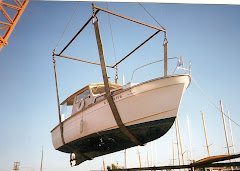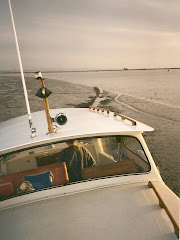
Snake River
1. Lower Granite Dam Statue mile marker- sm 106
2. Little Goose Dam sm 70
3. Lower Monument Dam sm 42
4. Ice Harbor Dam sm 10
Snake River Marinas
1. Hells Canyon sm 137
2. Boyer marina sm 105
3. Lyon's Ferry sm 60
4. Fishook sm 18
5. Charbonneau sm 11

Columbia River
1. McNary Dam sm 294
2. John Day Dam sm 216
3. The Dalles Dam sm 192
4. Bonneville Dam sm 145
Columbia River Marinas
1. Metz Marina Kinnewick, Wa sm 329
2. Umatilla sm 290
3. Crow Butte 263
4. Arlington sm 245
5. John Day River- Philippi Park sm 220
6. The Dalles sm 190
7. Hood River sm 170
8. Cascade Locks sm 150
9. Beacon Rock sm 141
10. Government Island sm 115
11. Scappoose Moorage on the Multnomah Channel
These 2 drawings give me a big picture over view of the trip. Without flipping through pages of charts, pages of reference books, I can take a quick look and see important things like on the Snake river there is only one marina that sells diesel, 3 marinas with pump-outs for the head(toilet). While, on the Columbia there is a long stretch of over a 120 miles between Umatilla and Hood River fuel stops. Shatoosh has a 200 mile range on her meager fuel tank. These are important things to know when planning and is easily seen in these pictures.
The mileage markers are in statute miles and 0 sm is measured from the mouth of the Columbia as it enters the Pacific ocean. 0 sm is measured at the mouth of the Snake as it enters the Columbia River. The mileage markers are stamped on the nautical charts, but listed, strangely, as statute miles(sm) rather than nautical miles(nm).
Since all navigation is done in nautical miles, it would make navigation easier if the markers were nautical miles. A statute mile is shorter than a nautical mile. We would never put nm on a road map, so why put sm on a nautical chart?
To convert statute miles & nautical miles: "Chapmans Piloting and Small Boat Handling" suggests:
statute miles x .87 = nautical miles
nautical miles x 1.15 = statute miles
In my planning book there are more detailed spreadsheets, showing all aspects of marina facilities, a list of way points and routes for entrance and exit of locks, routes to navigate shallow areas, how to lock through the dams, how to call the lock masters on the VHF radio, how to tie your vessel in the locks, to-do lists for preparing Shatoosh for long distance hauling on a trailer, spare parts list, on board supplies, and menu planning.
The more one prepares, the safer the trip will become. I am feeling well prepared today versus a month ago. I am ready to go, but the weather is still too cold and I forget it is still winter. Patience, my friend, patience I tell myself, but I am so excited.













